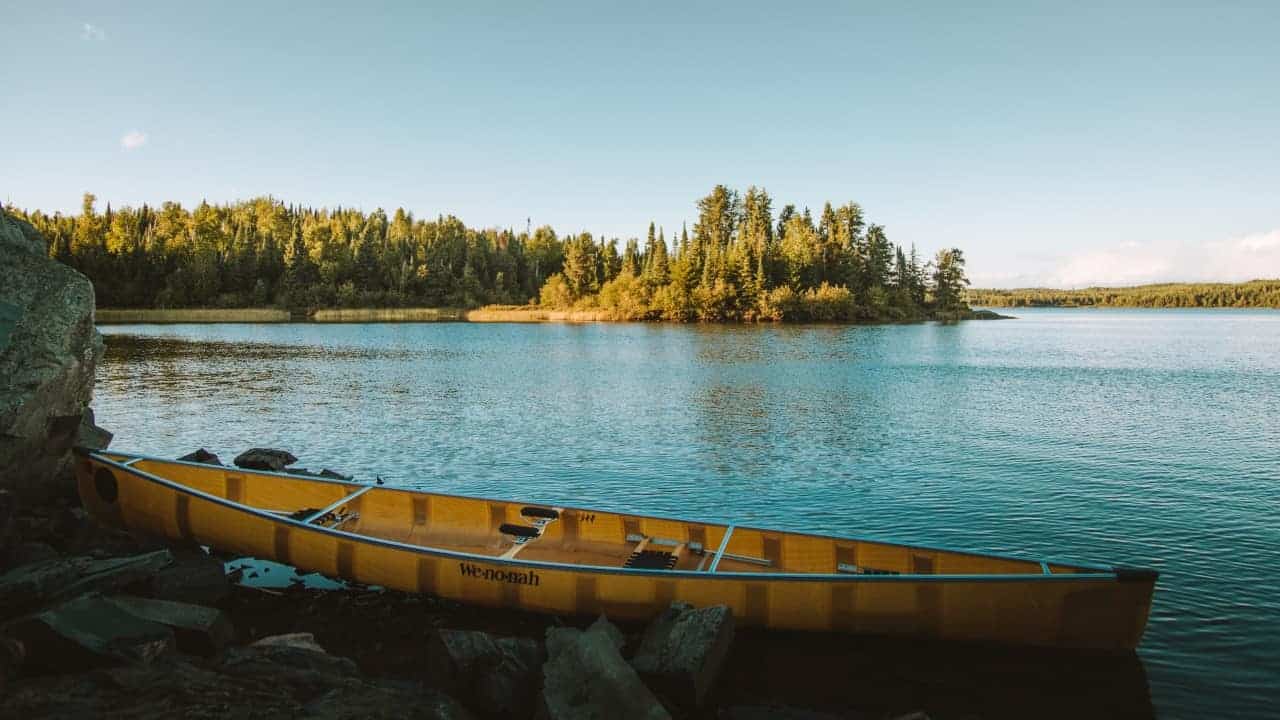There’s a good reason why dispersed camping in Minnesota is popular. Minnesota has countless state parks, old-growth national forests, prairies, lakes, and rivers. There is no shortage of superb dispersed campsites to pitch a tent in the Minnesota State.
While it’s true that each dispersed camping area in Minnesota is unique in its own way, not all of them provide immediate access to stunning wilderness and outdoor adventure. Here are the ones I consider the best:
Minnesota Dispersed Camping Map
You can easily find the locations of the best dispersed campgrounds in the state using this map.
Best Dispersed Camping Areas in Minnesota
Harriet Lake Rustic Campground
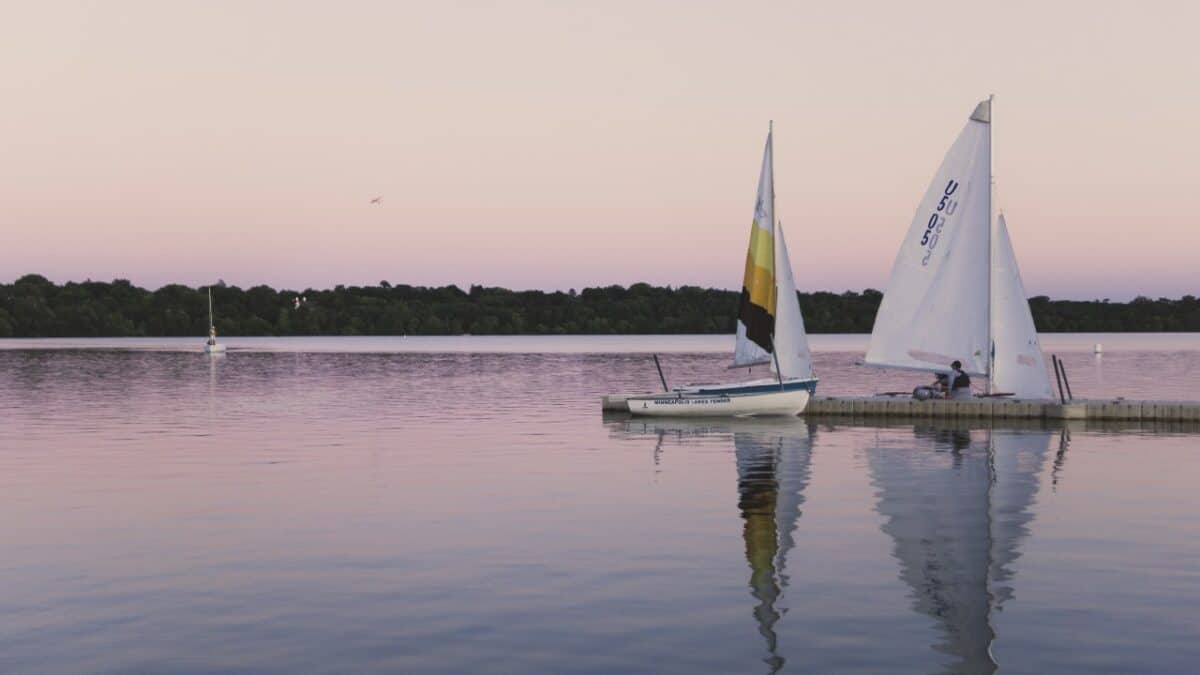
- Map
- Crowds: Moderate
- Water: No
- Restrooms: Vault toilet
The Harriet Lake Rustic Campground dispersed campsite is located in the northeastern part of the state, about 13 miles from the shores of Lake Superior. It’s in the middle of Minnesota’s Arrowhead Region, famous for its numerous lakes.
One of the best things about Harriet Lake Rustic Campground is it’s situated on an abandoned farm. As such, it is very spacious and provides dispersed camping with plenty of room to spread out.
As the campsite’s name suggests, those who decide to set up a dispersed campsite here will stay on Harriet Lake’s shores. The lake and the surrounding area provide plenty of access to good fishing, hunting, hiking, and canoeing.
As for the camping amenities, expect picnic tables, fire pits, and a single vault toilet for all visitors. Potable water is unavailable – you’ll have to bring water in portable containers or try filtering from the lake.
If you find Harriet Lake Rustic Campground packed, visit the nearby Hogback Lake Rustic Dispersed Campsite. This is another of the area’s excellent free dispersed campsites, and it’s just a stone’s throw from the one at Harriet Lake.
As one camper put it, Harriet Lake Rustic Dispersed Campsite is located in the “actual middle of nowhere,” which is its greatest asset. It’s an ideal destination for folks seeking peace and quiet in Minnesota’s scenic wilderness.
Six Mile Lake Dispersed Campsite
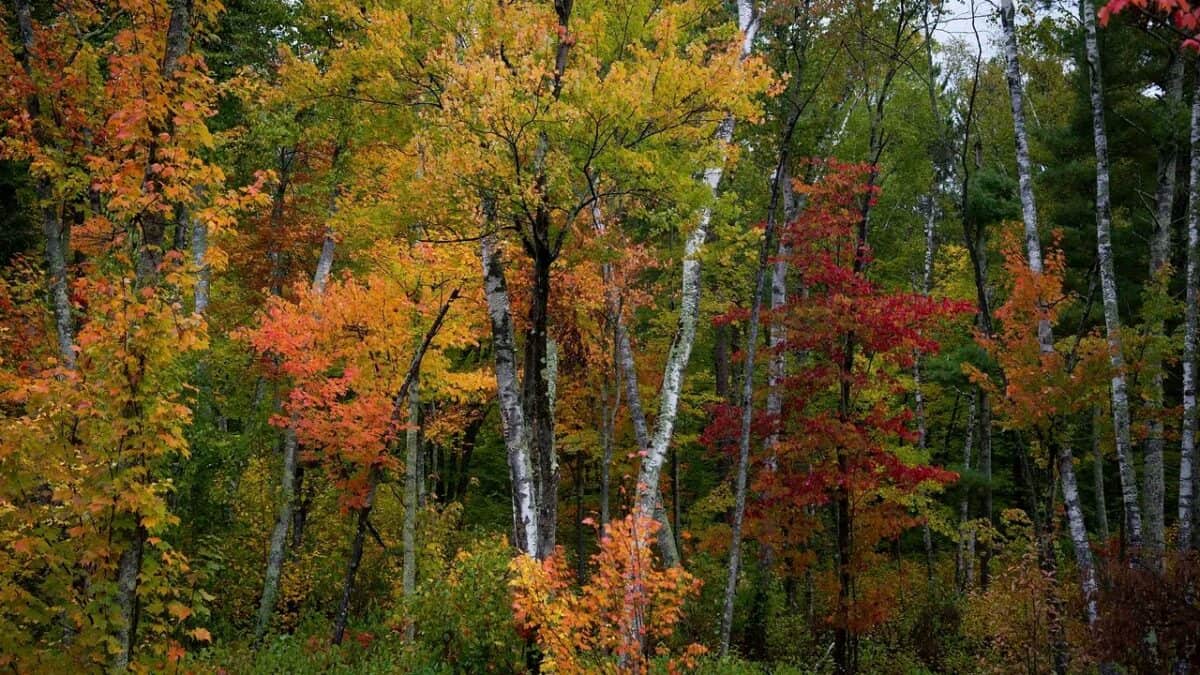
- Map
- Crowds: Light
- Water: No
- Restrooms: Vault toilet
Situated close to the small town of Bena, in Chippewa National Forest, Six Mile Lake is one of Minnesota’s best dispersed camping destinations. The specific area in Chippewa National Forest I’ll be looking at is Six Mile Lake Campsite, which can be found on the lake’s eastern shore, right next to the popular Cherneys Resort.
There, you will find 12 spacious dispersed campsites in a peaceful birch woodland. Some of these are quite roomy and easily accommodate larger rigs, making this free campground an excellent option for RV campers.
The Six Mile Lake dispersed camping area also has a boat ramp, allowing you to head out on the water, enjoy fishing, and enjoy the views. The fact that Six Mile Lake is so close to the lake also comes with a disadvantage – there are a lot of mosquitoes here in the summer.
As for the amenities, expect only a vault toilet and some rock fire rings. Just like in the case of Harriet Lake Rustic Campsite described above, you’ll have to bring some water with you or pull and treat it from the lake.
You should have no trouble finding a free dispersed camping spot here, though. The campsite is only lightly crowded even during the busy summer weekends.
The last thing worth mentioning is that dispersed camping at Six Mile Lake in early Autumn is not recommended – once the birch trees in Chippewa National Forest lose their leaves, you’ll be exposed to freezing winds. As for summertime camping, make sure to pack a good bug spray.
Diamond Lake Dispersed Camping
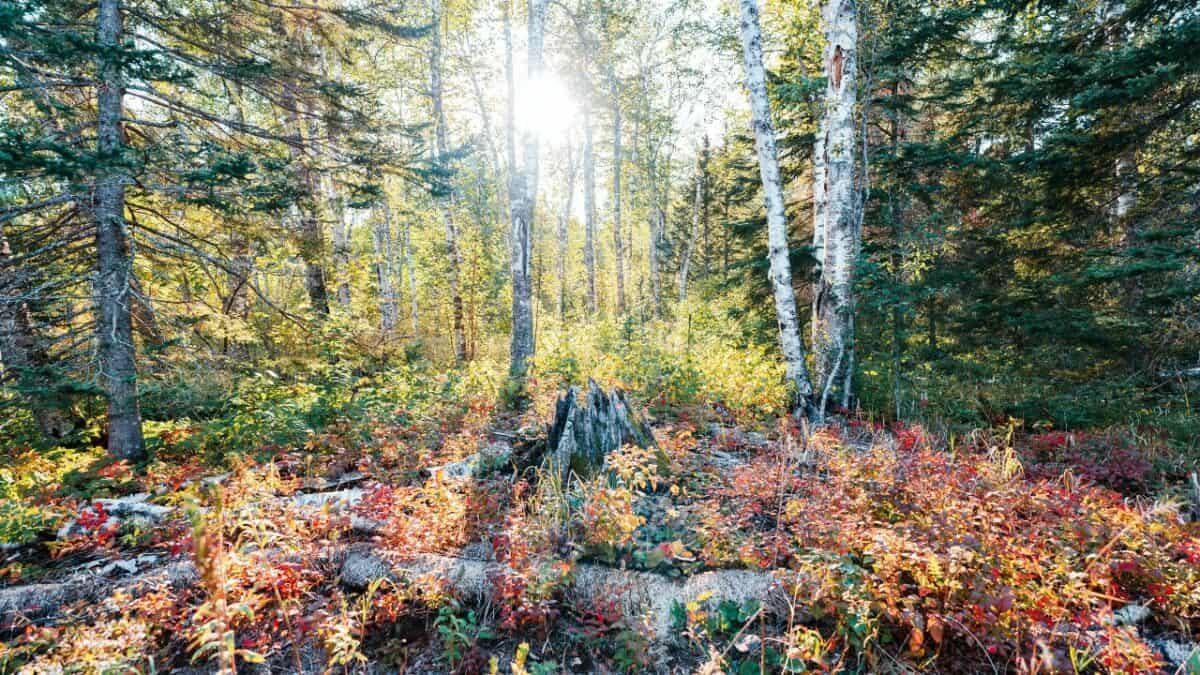
- Map
- Crowds: Moderate
- Water: No
- Restrooms: No
Located in central Minnesota, Diamond Lake dispersed camping is famous for its clear and sparkling waters. It’s a popular fishing destination, so dispersed campers who like to fish during their trip can expect to catch Yellow Perch, Northern Pike, Green Sunfish, Black Bullhead, and various other fish.
If you’re into boating, you’ll be happy to hear that Diamond Lake features a boat ramp. On the other hand, campers who like to explore or go hiking will appreciate that Diamond Lake is close to several trail systems.
While you can disperse camp on any side of the lake, the best place can be found on its western shore. This small, tranquil lakeside dispersed campsite can only accommodate a few setups.
Remember that it’s not a designated dispersed camping area. As such, it features no picnic tables, fire rings, or other amenities. Moreover, the road that leads to the Diamond Lake campsite is long and quite rugged. It can turn into a muddy mess after heavy summer rains, so take it slowly and drive with caution.
There are several other dispersed camping options close to Diamond Lake. If all the spots are taken, you should have no trouble finding something nearby that suits your needs.
Game Refuge Road (Rum River State Forest)
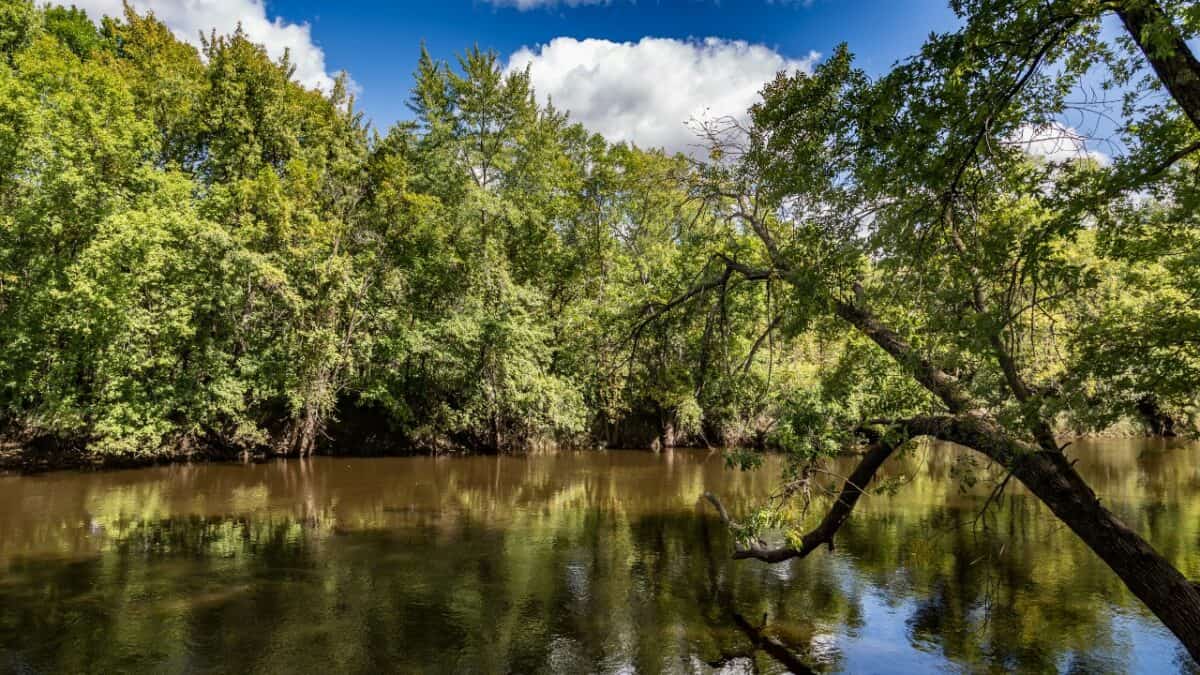
- Map
- Crowds: Moderate
- Water: No
- Restrooms: No
The next Minnesota dispersed camping area on my list can be found northwest of the Twin Cities, in Rum River State Forest. Due to its central location in the state, the forest is easily accessible from all sides.
Even though dispersed camping is allowed in the entire forest, the best place to do so is along Game Refuge Road. The road runs through the middle of the woodland in the north-south direction and features plenty of pullouts scattered along the way.
While it’s true that some of these pullouts are larger than others, Game Refuge Road is best suited for smaller recreational vehicles. Also, the campsites are pretty spaced out, so visitors can expect some level of privacy.
On the not-so-bright side, the road isn’t really kept up for the winter. If you wish to set up camp here during the colder part of the year should come with a 4×4 vehicle and drive slowly.
Moreover, Game Refuge Road is rampant with mosquitoes and horseflies in the summer. You’ll definitely want to pack a quality bug spray to fully enjoy this forest’s beauty in the summertime.
The last thing worth mentioning here is that this is true dispersed camping. You’ll have to be fully self-sufficient while camping in Rum River State Forest – there are no facilities such as vault toilets or drinkable water sources.
Long Lake, Walker
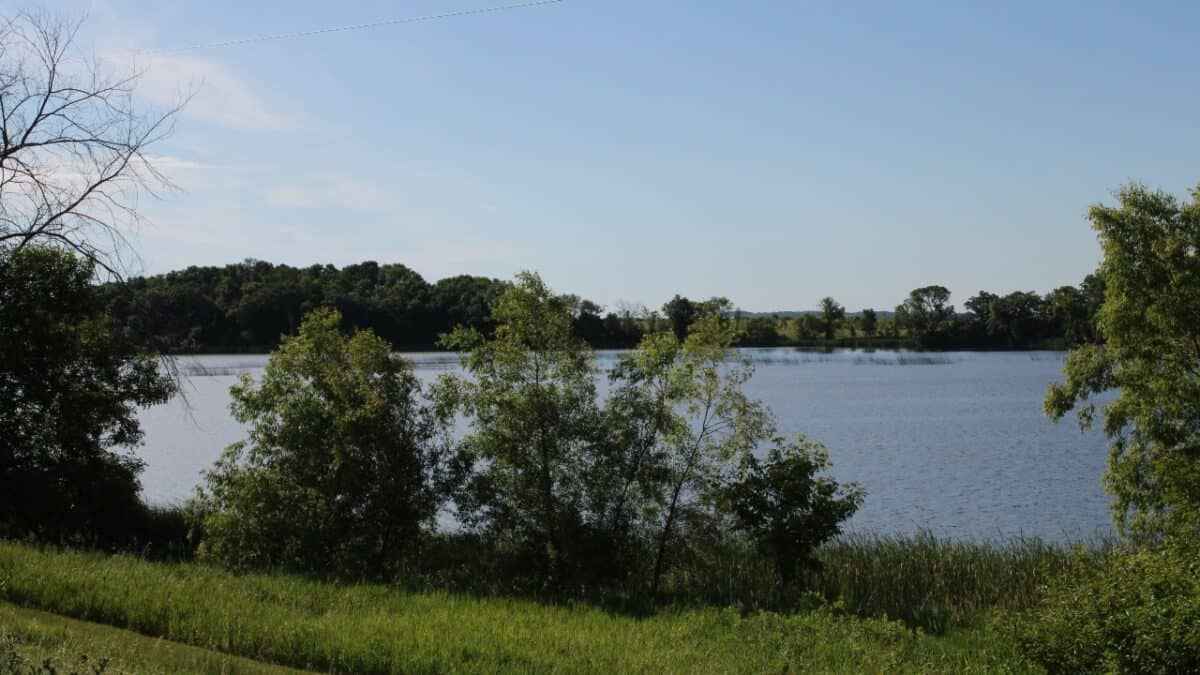
- Map
- Crowds: Moderate
- Water: No
- Restrooms: No
Besides Diamond Lake, Chippewa features several more National Forest dispersed camping areas worth considering. One of the best is the western shore of Long Lake, which can be found just south of the city of Walker.
Drive southwest along Lake May and Long Lake and take a left just before reaching Sweetbrier Trail. You’ll find yourself at a scenic, dispersed site with easy access to the lake.
It’s not the roomiest campsite on my list, though – there’s only enough space for a handful of tent setups and maybe 3-4 recreational vehicles. On the bright side, this makes for a quieter camping experience.
The best thing about this dispersed site is that it allows visitors to enjoy various water-based activities. It’s a particularly fantastic destination for anglers – there is excellent fishing in Long Lake.
You will, however, have to be completely self-sufficient while staying here. There are no facilities such as restrooms or trash cans, so you’ll want to pack out your garbage and properly bury any human waste.
If you ever get bored sleeping under the stars, head to Camp Bliss. It is situated on the southern shore of Long Lake, just down the road.
Crane Lake
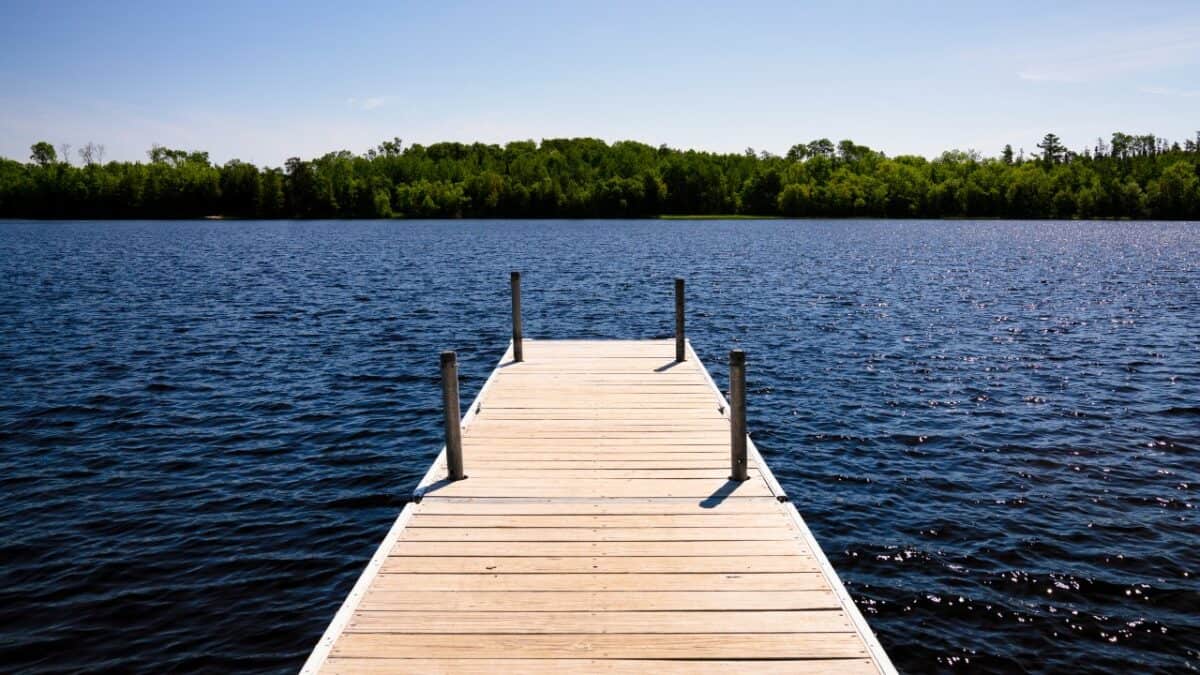
- Map
- Crowds: Moderate
- Water: No
- Restrooms: Some campsites feature vault toilets
Crane Lake is an excellent destination for dispersed camping for all those trying to disconnect for the weekend. Located next to the Canadian border, the lake is the western entry point to Voyageurs National Park and Boundary Waters Canoe Area.
To properly enjoy this body of water, you’ll want to rent or bring a canoe or kayak. You’ll have the whole lake at your fingertips and be able to stay at each of its three primitive campsites.
Each campsite features ample space for tents and a small fire ring. Some feature tent pads and latrines as well, but none of them has any trash bins, so make sure to pack out all of your garbage.
The cellular service is relatively poor here, so you’ll definitely want to bring a detailed physical map. There are also quite a lot of mosquitoes at Crane Lake, so make sure to pack a good insect repellent too.
If you’re into hiking, check out the nearby Vermilion Gorge Trail. It’s a 3-mile hike that features gorgeous waterfalls and breathtaking granite cliffs.
The last thing worth mentioning here is that the primitive campsites described above are not accessible to RVs. If you really want to camp here in an RV, there are several shoreside RV parks with full electric hookups.
Marcell Area Dispersed Camping
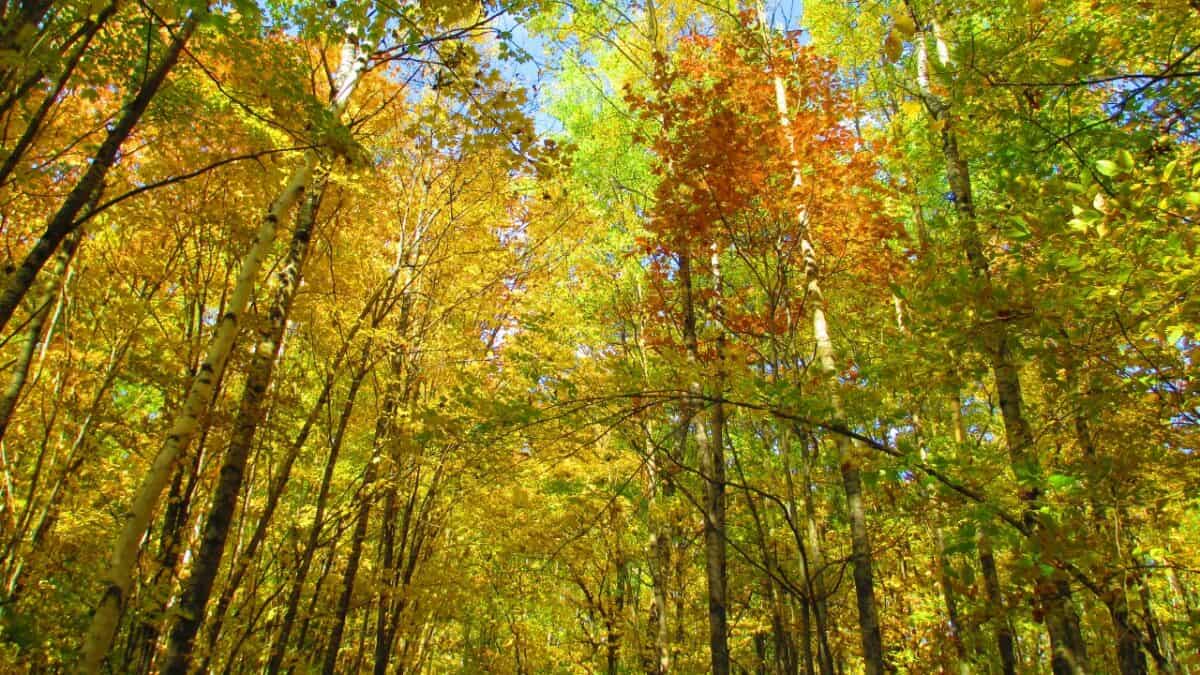
- Map
- Crowds: Moderate
- Water: No
- Restrooms: Some campsites feature pit toilets
The Marcell Area is located in central Minnesota, some 25 miles north of Grand Rapids. The area’s best dispersed sites include Trout Lake, Suomi Hills, and Spider Lake.
All the camping spots at these three locations are first-come, first-served, so you’ll definitely want to have a backup plan. But still, the Marcell Area sees little traffic – you shouldn’t have trouble finding a great place to set up camp.
Some of these camping spots can only be accessed by kayaks or canoes while reaching some requires a mile or two of backpacking. Some sites are just a short walk from the parking area.
These dispersed camping areas vary in degree of how “primitive” they are. Some are actually pretty luxurious, featuring pit toilets, picnic tables, and metal fire pits. The most basic ones have only rock fire pits.
The Marcell Area is a great destination for campers who also love hiking. Several excellent trails meander around the region’s lakes.
If you’re looking for ultimate solitude and seclusion, I recommend camping at the Suomi Hills. You’ll find yourself in a serene birch forest full of bird sounds and wonderful smells of Minnesota’s wilderness.
Old Crossing Treaty Park
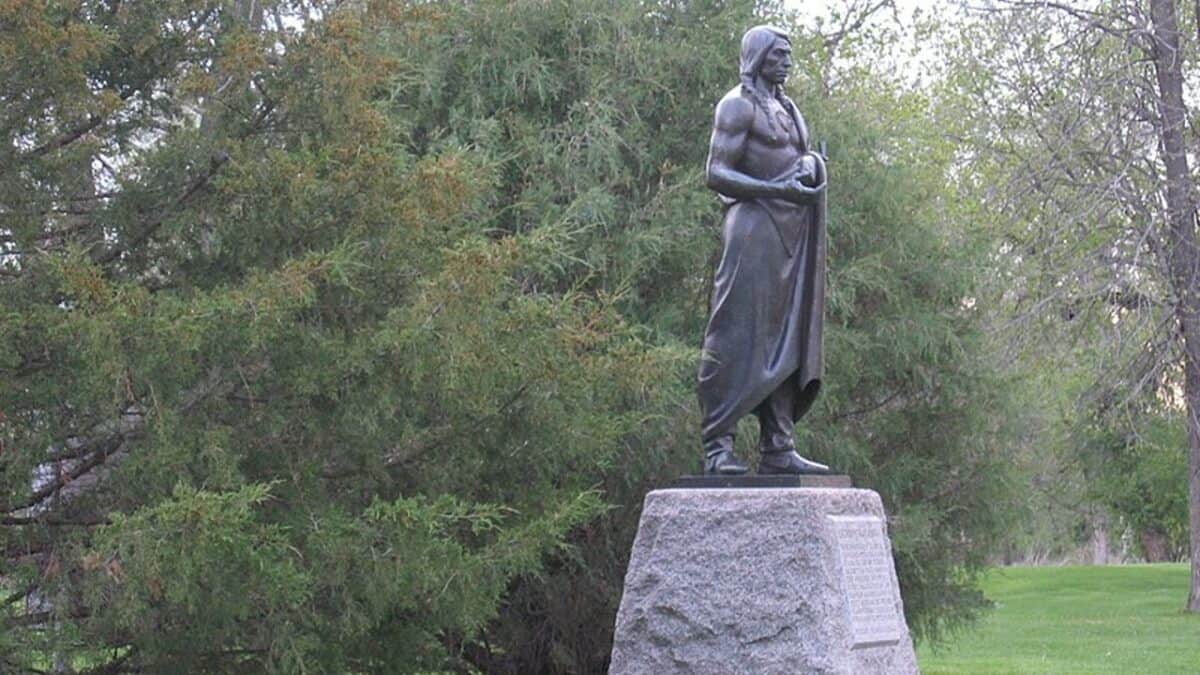
- Map
- Crowds: Busy
- Water: Yes
- Restrooms: Pit toilets
Old Crossing Treaty Park is located about half an hour from Grand Forks, North Dakota; the Old Crossing Treaty Park is one of the most convenient dispersed camping areas in northwestern Minnesota.
It’s a free campground situated next to the Red River, consisting of a grassy patch and some trees that provide a nice shade to campers. Despite being relatively close to the road, the traffic noise at Old Crossing Treaty Park is minimal.
Also, Old Crossing Treaty Park features decent amenities for a free dispersed site in the not-so-visited part of Minnesota. These include pit toilets, drinking water pumps, primitive fire rings, and picnic tables.
Old Crossing Treaty Park is clean, stocked, and well-maintained. There’s even a trash barrel, so you won’t have to pack out all of your garbage when leaving.
Another great thing about this campsite is its river access via a simple boat ramp. The slow current of the Red River allows novice paddlers to enjoy their time on the water comfortably.
The only disadvantage of Old Crossing Treaty Park is its poor cellular reception.
Indian Lake Campsite
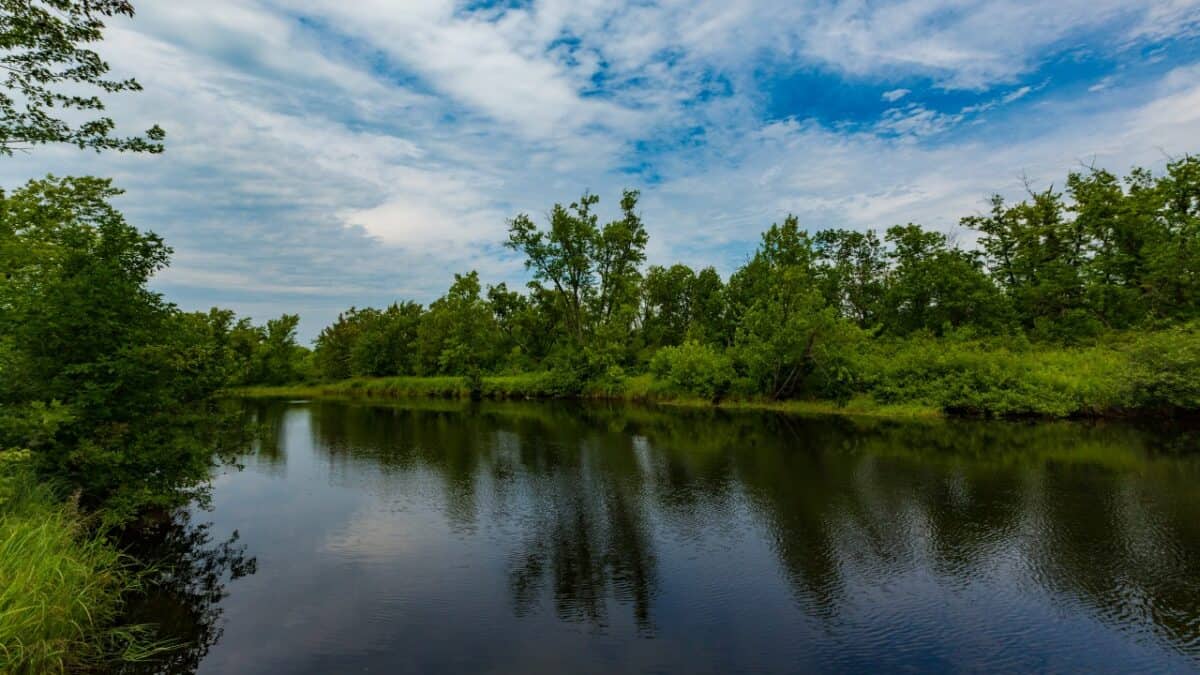
- Map
- Crowds: Moderate
- Water: Yes
- Restrooms: Vault toilets
Situated only twenty miles from Duluth, Cloquet Valley State Forest is one of Minnesota’s most breathtaking natural wonders. This beautiful woodland provides many opportunities for outdoor enthusiasts, ranging from canoeing to hunting.
Those interested in dispersed camping should head over to Indian Lake Campsite, located on both sides of Highway 44 (Brimson Road). You’ll want to take a left when coming from the south if you want to camp on the lake’s shore.
Although a dispersed campground, Indian Lake is actually well-equipped in terms of amenities. Each camping spot has a cleared area with a picnic table and a fire ring.
Moreover, the Indian Lake Campsite features drinking water, garbage cans, and vault toilets. There is also a boat ramp for those interested in fishing and a sandy beach for those who fancy taking a dip.
Since it’s located in Cloquet Valley State Forest, the Indian Lake Campsite is a great place for several outdoor activities. The campsite can be your HQ for hunting, fishing, hiking, and snowmobiling trips in the area.
The most adventurous dispersed campers will appreciate the fact that the Indian Lake Campsite provides easy access to the 33 miles of canoeing bliss known as the Cloquet River State Water Trail.
For more great camping spots, read our Yellowstone dispersed camping guide and Yosemite dispersed camping guide.
Minnesota Dispersed Camping Must Know
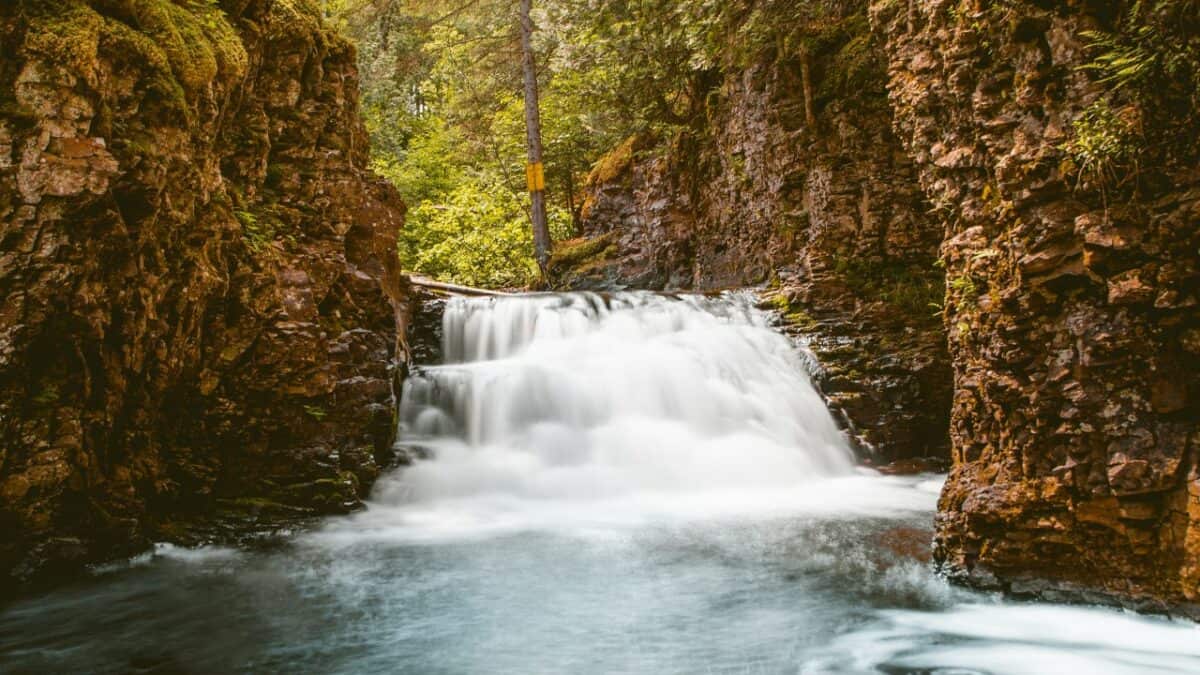
Is Dispersed Camping Allowed in Minnesota?
Absolutely! With a quarter of Minnesota being public land, outdoor enthusiasts should have no trouble finding excellent designated dispersed camping spots here.
There are plenty of state and national forests in Minnesota, and in these, dispersed campers are allowed to stay for up to two weeks within a continuous 30-day period during summertime.
The Land of 10,000 Lakes is fairly lenient when it comes to dispersed camping. It is perfectly legal to spend a night in your RV at rest spots. Unlike in many other states, doing so is not subject to time limits.
In most regions of Minnesota, dry camping in private parking areas is also allowed. There are, however, some exceptions, mainly in the Twin Cities region.
How Do I Find Dispersed Sites in Minnesota?
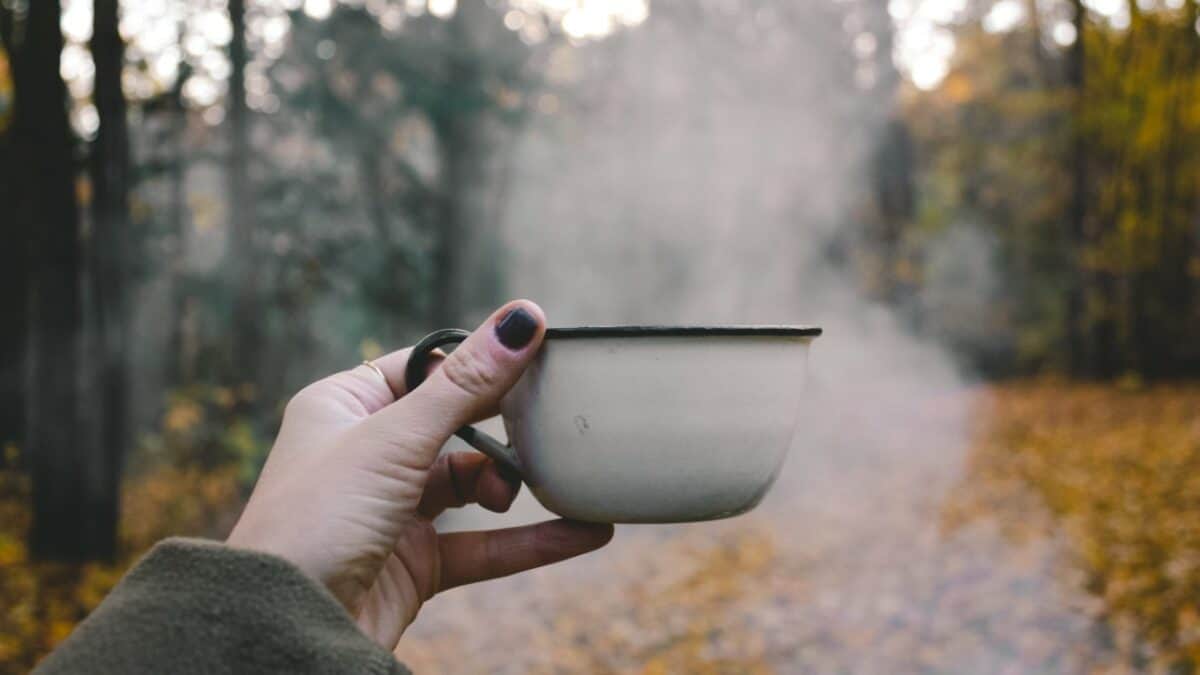
If you’ve ever camped this way before, you’ll have no trouble finding top-notch dispersed camping areas in Minnesota. If you haven’t, you’ll want to start your search by looking at some of the state’s National or State Forests.
For more information about the camping spots in the region you’re heading to, reach out to Forest Ranger District offices in either Superior or Chippewa National Forest. As for Minnesota’s State Notional Forests, you can contact the Department of Natural Resources.
Another thing that can help you find excellent dispersed camping locations in this state is the plethora of free and paid online resources. The best of these are:
- The Dyrt – Available in free and paid versions, this app allows users to filter for dispersed campsites.
- Freecampsites.net – The minimalistic interface of this popular website makes finding dispersed campsites as easy as it gets.
- Campendium – Available as a website and a mobile app, Campendium allows users to easily find designated dispersed camping locations, RV parks, and both private and public campsites.
For more resources, check out our list of the top dispersed camping apps.
Dispersed Camping Rules & Regulations in Minnesota
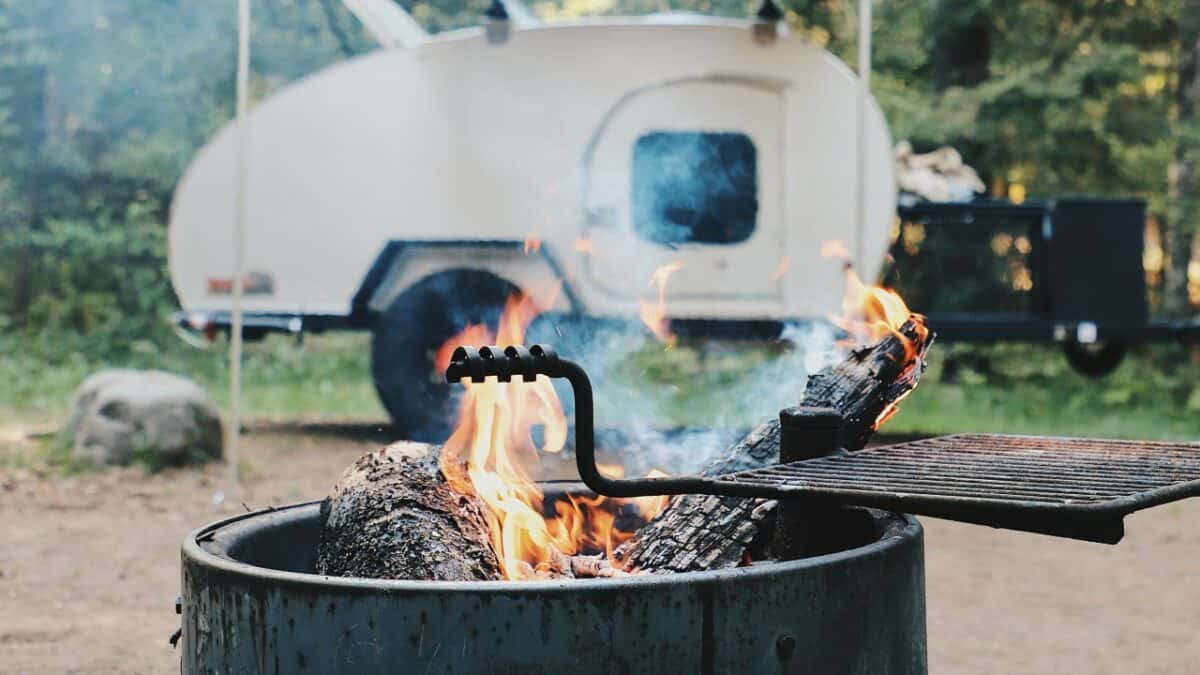
Besides the overall ease of heading out on a free camping trip, one of the best things about dispersed camping is that it can be done without reservations or special permits. The same applies to dispersed camping in Minnesota, the Land of 10,000 Lakes.
However, it is still vital to familiarize yourself with some general rules regarding dispersed camping in Minnesota before heading there. Here are the most important regulations, as outlined by the United States Forest Service:
- Between September and May, you can disperse camp for 21 days within a continuous 30-day period.
- Between May and September (summertime camping), this number is lowered to 14 days within a continuous 30-day period.
- Make sure you’re not blocking gates, roads, or trails with your tent or vehicle when setting up your camp. Stay away from established campsites, picnic areas, and trailheads.
- Building permanent structures of any type and digging trenches is not allowed. Keep your camp as small as possible.
- Do not light a campfire if doing so is not permitted in that area. If there’s a fire ring, use it. When leaving the campsite – whether permanently or for a day hike – ensure the fire is fully extinguished.
- Do not make a campfire with the wood you’ve brought with you. Use only dead wood you’ve collected in the area around the dispersed camping area.
- If vault toilets are unavailable, dig a hole at least 150 feet from any water source, answer the “call of nature,” and then bury the hole.
- When searching for a place for free dispersed camping, pick a spot absent of vegetation and at least 200 feet from water sources.
- Minimize your impact on the environment by practicing the Leave No Trace principles.
The Takeaway
Whether you prefer the comforts of an RV or are ready to take on the Boundary Waters Canoe Area Wilderness, an excellent dispersed campsite in Minnesota is not far away.
Hopefully, my descriptions of the best camping locations in Minnesota will help you choose one that matches your preferences. Have a great time on your upcoming adventure!

I love hiking, backpacking, and camping. From the Camino de Santiago to the West Highland Way in Scotland or simply a great day hike on the weekend. Hiking refreshes me, my mind, and keeps my body reasonably fit. So far I have walked three Camino routes and many other long distance hikes in the UK, Canada, and around the rest of Europe. One of the best was my hike up Ben Nevis.

